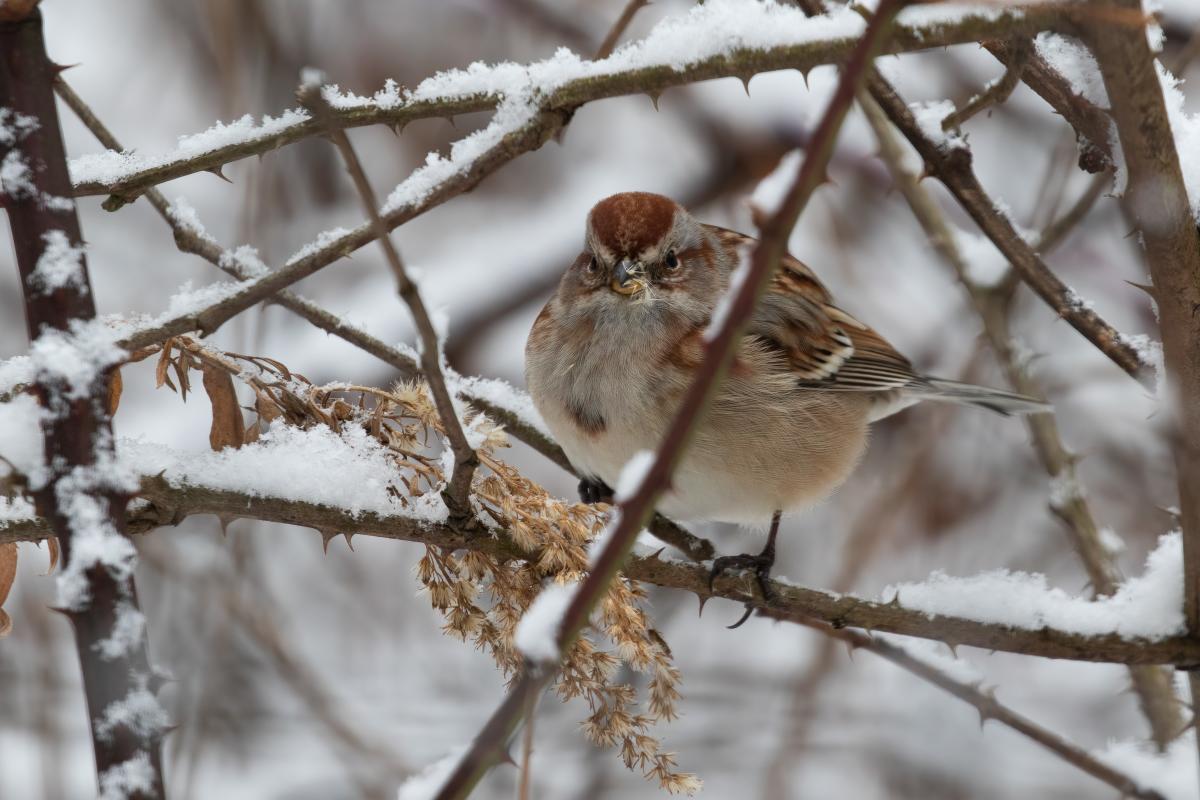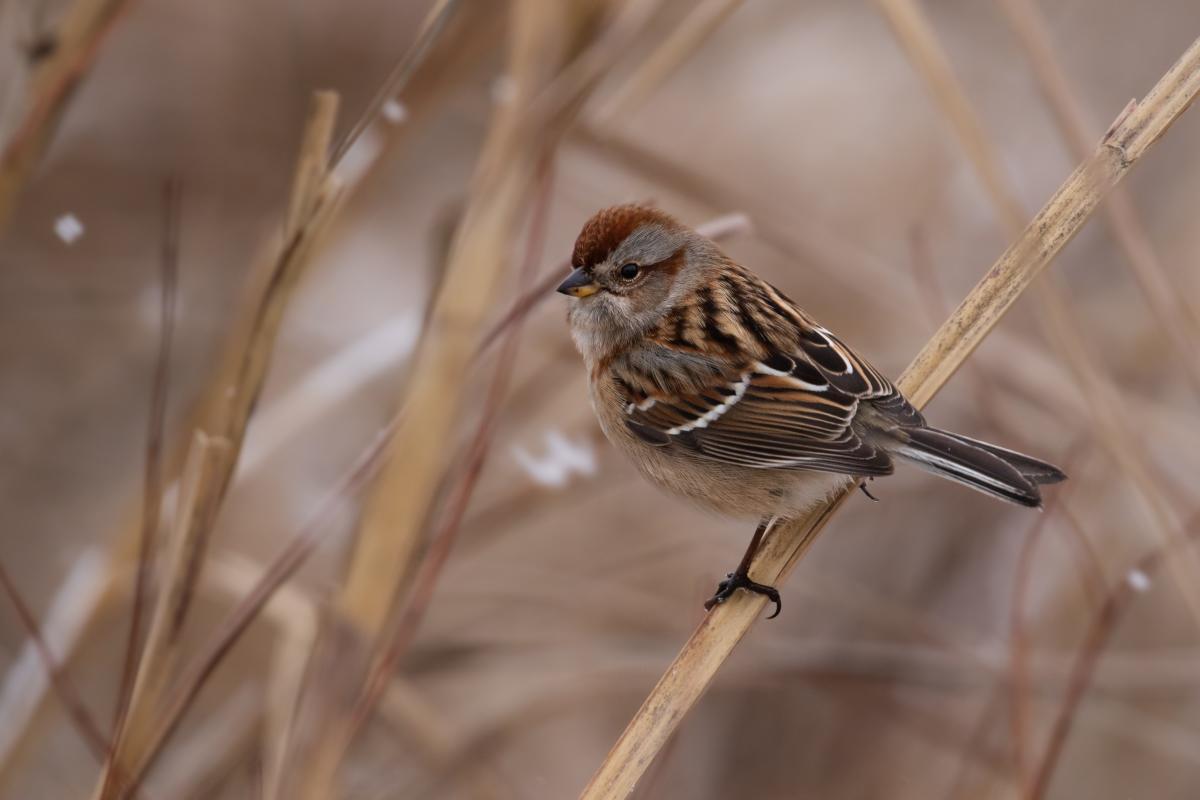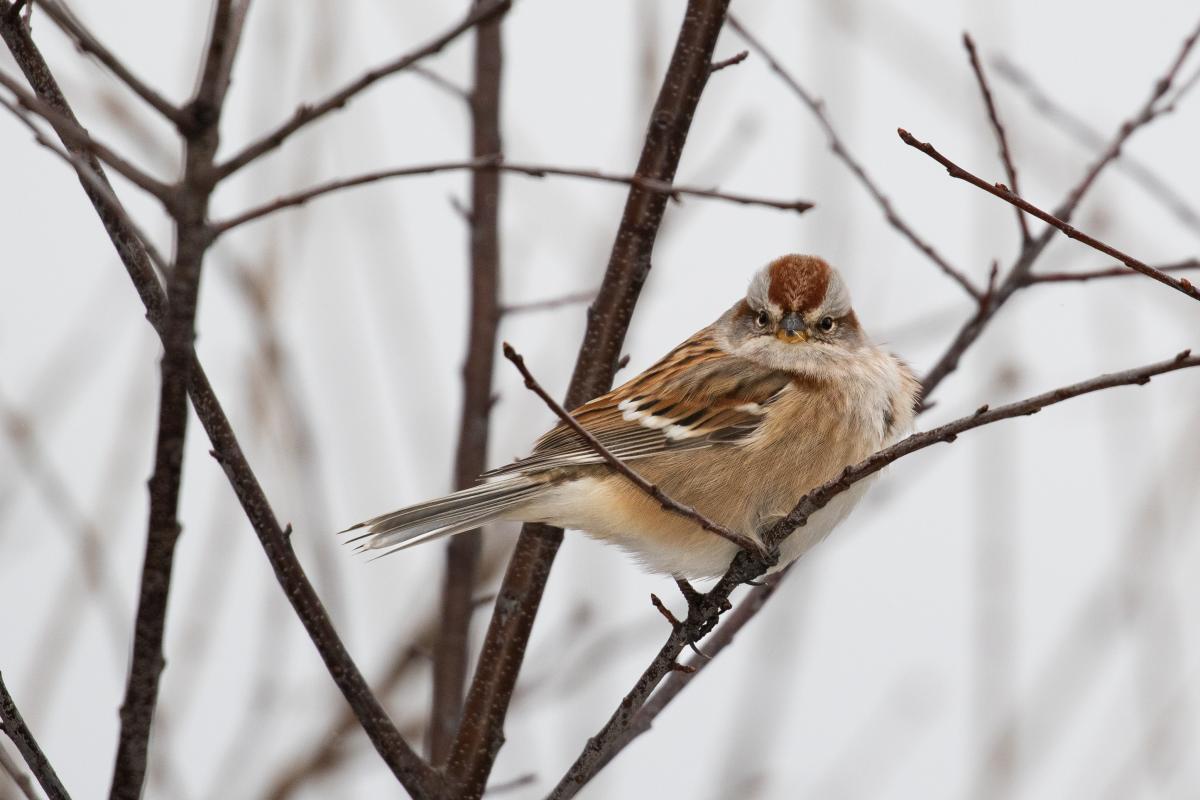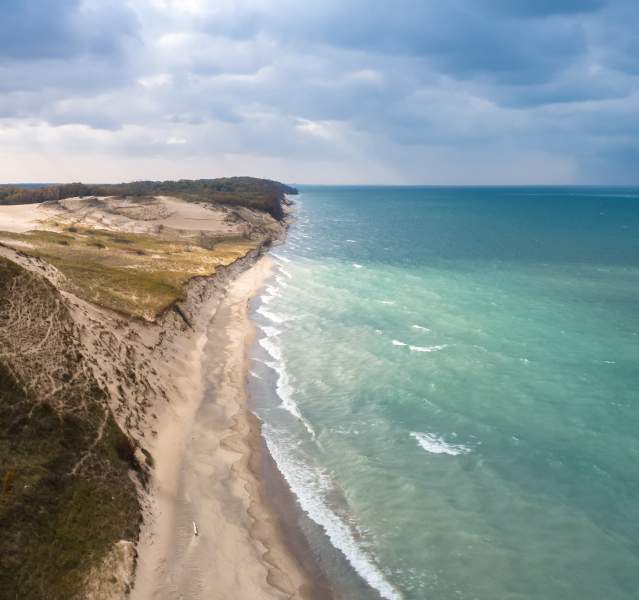December and January are ‘a visiting time’ – a time to escape the chill of winter and explore new spaces in far-away places, or to travel to see friends and family in old familiar haunts and catch up on the year that was. It’s also a visiting time for sparrows, and my grandfather always told me that a visit from a sparrow is good luck!
Many of our Indiana summertime sparrows – the Henslow’s sparrow, grassland sparrow, and chipping sparrow - have recently migrated south for the winter. But another sparrow has just arrived – the American tree sparrow (Spizelloides arborea) - and it is here to stay for the next several months.
American tree sparrows spend the summer way up in Alaska and Northern Canada’s transition zone, where willow, alder, spruce, and birch grow at the edge of the open tundra. (Gosh, that must be pretty – wouldn’t it be nice to visit there one day?) In the late fall, the American tree sparrows migrate south to southern Canada and northern United States of America, where they take up temporary winter residence in transitional areas with trees and shrubs at the edge of open land - brushy roadsides, woodland edges, shrubby fields, marshes, and wetlands.

And they have come to eat! Here in Indiana and in other areas of their winter range, American tree sparrows are able to find seeds and berries in more abundance than in their summertime habitat at this time of the year.
American tree sparrows easily fall into the category of LBB – Little Brown Birds. Without binoculars, it can be a challenge to distinguish which species the little brown ball of feathers might be. Many of the sparrows that we see in Indiana are in the 4 to 6-inch range and mottled with brown feathers. So how can we distinguish the American tree sparrow from other sparrows that winter here, like the white-throated sparrow, the song sparrow, and the introduced-from-Europe house sparrow?
If you can get a good view of the American tree sparrow, you’ll see that in addition to being little and brown, it has a cap of red feathers on its head, a grey face, and a red eye-streak, which a few other sparrows also have. But its most striking feature is its bicolored beak: the upper bill – the maxillary beak – is dark in color, and the lower bill – the mandibular beak – is yellow. And on its buff-colored, un-streaked breast is a small dark spot of feathers. Put it all together, and you have yourself an American tree sparrow!
Should you not be able to see the bird well enough to note the field markings, maybe your ear will catch the song of the males sung from a perch and described by Cornell’s All About Birds website as a series of high sweet sounding whistled notes sweet, sweet, todiddle dittle di that fall in pitch as the notes are sung. When feeding and foraging, you’ll often hear a musical “teedle-eet” from members of the flock to one another.
Tree sparrows are ground feeders, foraging most of their food from the ground. In fall and spring, they feed mostly on the seeds of grass, sedges, and wildflowers, as well as berries, catkins, and insects. During the summer, when rearing chicks, they feed more extensively on protein-rich insects – caterpillars, beetles, flies, moths, and spiders. During the winter, the American tree sparrow will dine on seeds and berries in natural places, and even come into backyards with landscaping plants still standing and with birdfeeders that have dropped small seeds to the ground.
My what entertaining eaters they are! They excel at removing the seeds and berries still attached to the plants by jumping, hopping, and slapping the seeds with their wings, and then scrapping the ground with their feet before eating them up.

In addition to being a ground feeder, American tree sparrows are also ground nesters. In the summer months, when they are in their breeding grounds in Canada and Alaska, they create small open cup nests made of grasses, moss, and twigs which they line with feathers and fine grasses. They build their nests in grass clumps at the base of shrubs for protection to hold the four to six pale blue, red-specked eggs and raise their young.
With all the time that the American tree sparrow spends on the ground eating and nesting, their name is rather misleading as they don’t spend much time in trees at all. Like most of us, they did not choose their own name! American tree sparrows were named by European colonists who came to America and thought they resembled the European tree sparrow. If I were to rename it, I might call it the cute busy bicolored beak bird. But now I’m wondering what name the American tree sparrow might give itself?

Partners in Flight estimates that there are approximately 26 million American tree sparrows in the world today, which seems like a lot. However, they are included in the listing of Common Birds in Steep Decline due to a decrease in number by 53% between 1970 and 2014. The causes of the decline are not well understood but could have to do with the sparrow’s disappearing winter habitat of meadows and wetlands that are converted to agricultural lands and residential or commercial areas.
Remember that American tree sparrows frequent backyards, so you can help this little brown bird by planting native plants in your own landscaping, leaving the stems standing until spring for the birds to glean the seeds, and by planting native shrubs and trees in your yard that provide winter berries, like serviceberry, elderberry, and sumac.
This winter, as you visit new places or are visited by friends and family, grab those binoculars and head out for a walk or drive, or simply enjoy sitting by the window looking out to see if the American tree sparrow might also be visiting you. If they are, you’re in luck!
The Nature Conservancy’s Kankakee Sands is an 8,400-acre prairie and savanna habitat in Northwest Indiana, open every day of the year for public enjoyment. For more information about Kankakee Sands, visit www.nature.org/KankakeeSands or call the office at 219-285-2184.

